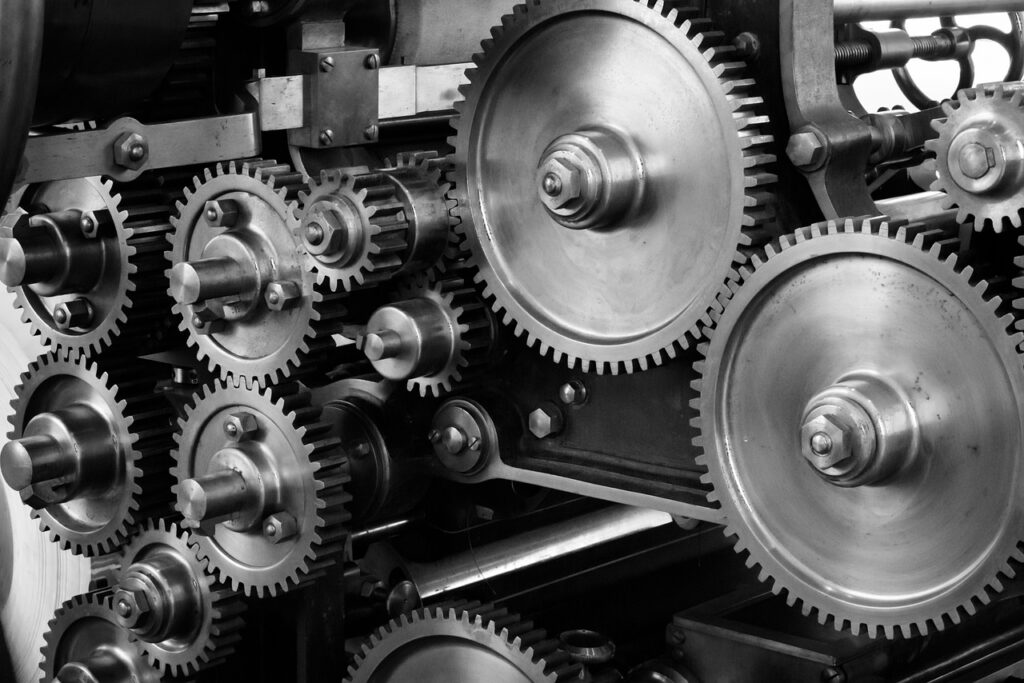“Have you ever been curious about the intricate world of mechanical artwork but didn’t know where to start?”
Mechanical artwork, with its intricate designs and moving parts, can seem intimidating to beginners. But fear not! This guide will walk you through the basics and help you unlock the secrets of mechanical artwork step by step. Let’s dive in and explore the fascinating world of mechanical art together!

Understanding Mechanical Artwork
Mechanical artwork, also known as kinetic art, is a form of art that incorporates movement. This movement can be powered by wind, motor, or manual manipulation. Mechanical artwork often includes gears, levers, and other mechanical components to create dynamic and interactive pieces.
When you look at a piece of mechanical artwork, take a moment to appreciate how each component works together to create a seamless and captivating movement. Understanding the mechanics behind the art will enhance your appreciation for the craftsmanship involved.
Types of Mechanical Artwork
There are various types of mechanical artwork, each with its own unique characteristics and style. Some common types of mechanical artwork include:
1. Automata
Automata are mechanical sculptures that mimic the movement of living beings. These intricate creations often feature animals, humans, or mythical creatures performing a range of movements.
Automata are perfect for beginners as they offer a great introduction to the world of mechanical art. Start by exploring simple automata kits and gradually work your way up to more complex designs.
2. Kinetic Sculpture
Kinetic sculptures are large-scale artworks that incorporate movement as a primary element. These sculptures can be found in public spaces, galleries, and museums, showcasing the beauty of mechanical motion.
Experiment with different materials and mechanisms to create your own kinetic sculptures. Let your creativity run wild and see where your imagination takes you!
3. Clockwork Art
Clockwork art, as the name suggests, revolves around the mechanics of clocks and watches. These intricate pieces often feature intricate gear systems and precise movements, making them a fascinating subject for mechanical art enthusiasts.
Try your hand at creating your own clockwork art by disassembling old watches and clocks to understand how they work. You can then repurpose the parts to craft your own unique creations.
Tools and Materials for Mechanical Artwork
To create your own mechanical artwork, you will need a set of tools and materials to bring your designs to life. Here are some essential tools and materials to get you started:
| Tool/Material | Description |
|---|---|
| X-Acto Knife | Precision cutting tool for intricate designs. |
| Pliers | Essential for bending and shaping metal components. |
| Screwdriver | Multi-functional tool for assembling and disassembling. |
| Gears | Critical components for creating movement in your art. |
| Springs | Provide tension and movement in mechanical artwork. |
| Bearings | Reduce friction and enable smooth movement in designs. |
Gather these tools and materials to have a solid foundation for your mechanical art projects. As you gain more experience, you can expand your collection to include more specialized tools and components.
Building Your First Mechanical Artwork
Now that you have a basic understanding of mechanical artwork and the necessary tools and materials, it’s time to start building your first piece. Follow these steps to create your own mechanical masterpiece:
1. Sketch Your Design
Begin by sketching out your design idea on paper. Include details such as movement patterns, gear placements, and overall dimensions. This step will serve as a blueprint for your artwork.
2. Select Your Components
Choose the gears, springs, and other mechanical components that will bring your design to life. Consider the size and material of each component to ensure they are compatible and will work together seamlessly.
3. Assemble Your Artwork
Carefully assemble the components according to your design. Use the tools at your disposal to secure the parts in place and test the movement of your artwork as you progress.
4. Fine-Tune Your Creation
Once you have assembled the basic structure of your artwork, fine-tune the movement and functionality of each component. Make adjustments as needed to achieve the desired result.
5. Display Your Artwork
After completing your mechanical artwork, proudly display it in a prominent place where you can admire it. Share your creation with friends and fellow artists to receive feedback and inspiration for future projects.

Tips for Beginner Mechanical Artists
As a beginner in the world of mechanical artwork, it’s important to keep a few tips in mind to enhance your skills and creativity. Here are some helpful tips for aspiring mechanical artists:
-
Start Simple: Begin with basic automata or small-scale sculptures to build your confidence and understanding of mechanical art fundamentals.
-
Experiment Freely: Don’t be afraid to try new techniques and materials in your artwork. Embrace experimentation as a way to learn and grow as an artist.
-
Seek Inspiration: Look for inspiration from established mechanical artists, museums, and online resources. Study their techniques and designs to broaden your artistic horizons.
-
Join a Community: Connect with other mechanical artists in local clubs, online forums, or workshops. Share your work, ask for advice, and collaborate with fellow artists to expand your knowledge and skills.
-
Practice Regularly: Dedicate time each day or week to work on your mechanical art projects. Consistent practice will help you hone your skills and develop your unique artistic style.
By following these tips and staying curious and open-minded, you will unlock the secrets of mechanical artwork and embark on a fulfilling artistic journey filled with creativity and innovation.
Conclusion
Congratulations, you have now embarked on the journey to unlock the secrets of mechanical artwork for beginners! By understanding the basics of mechanical art, exploring different types of artwork, and experimenting with tools and materials, you will gain valuable insights and skills in this unique art form.
Remember to have fun, stay curious, and never stop learning and creating. The world of mechanical artwork is vast and full of possibilities, waiting for you to explore and unleash your creativity. Keep building, designing, and innovating, and watch as your mechanical creations come to life before your very eyes. Happy creating!


